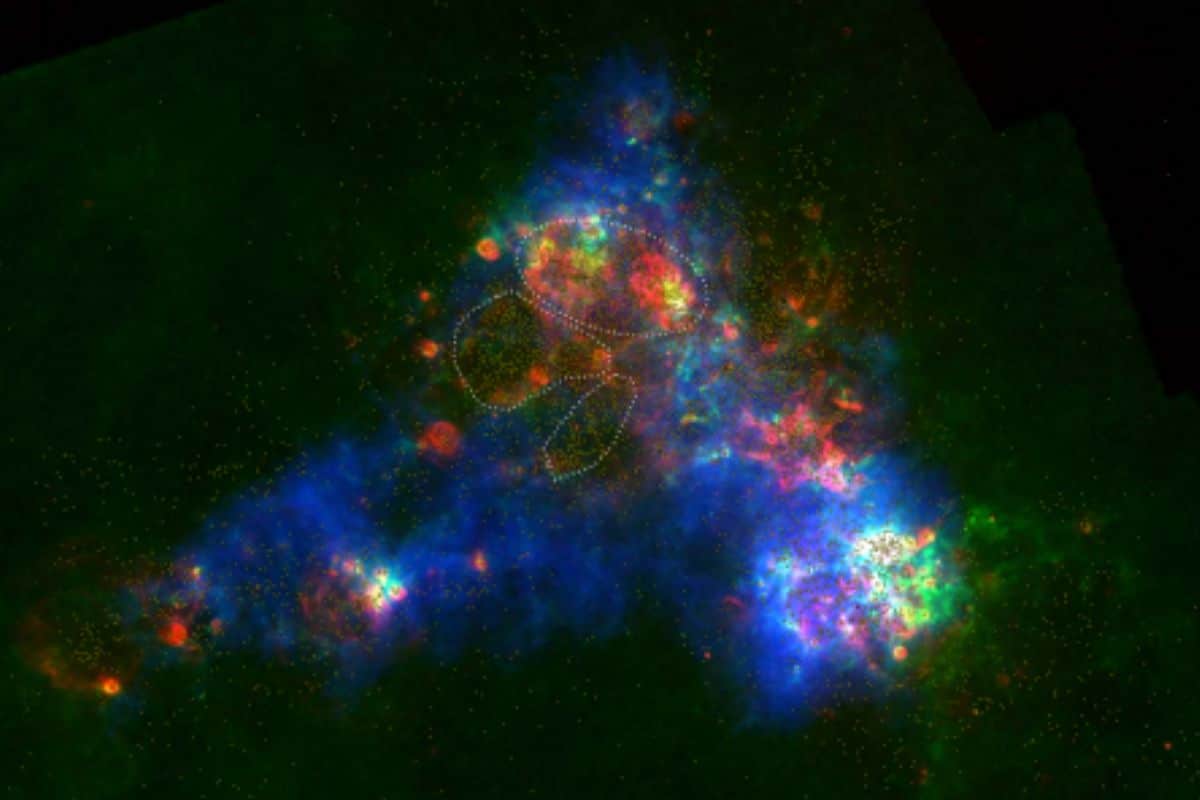
Melissa Ait Lounis Published on April 13, 2025
Collected at: https://dailygalaxy.com/2025/04/nearby-galaxy-being-shredded/
New research based on data from the European Space Agency’s Gaia spacecraft has revealed that the Large Magellanic Cloud (LMC) is actively disrupting its smaller galactic neighbor, the Small Magellanic Cloud (SMC). This finding not only sheds light on a dramatic intergalactic interaction playing out just outside our own Milky Way, but also challenges long-standing models of galactic evolution and structure.
A Tale of Two Galaxies Near the Milky Way
The LMC and SMC are two dwarf galaxies gravitationally bound to each other and to the Milky Way. Located about 160,000 and 200,000 light-years from Earth respectively, they are the most prominent satellite galaxies of our own.
Despite their proximity and similar origins, the recent study indicates their relationship is far from peaceful. Scientists have now documented that the LMC is exerting powerful gravitational forces on the SMC, gradually pulling it apart by dragging away its stars.
GAIA Data Reveals Violent Stellar Motion
By tracking nearly 700 massive stars—each at least eight times the mass of our Sun—in the SMC, astronomers uncovered striking patterns in their movement.
According to Kengo Tachihara of Nagoya University, co-leader of the research team: “When we first got this result, we suspected that there might be an error in our method of analysis. However, upon closer examination, the results are indisputable, and we were surprised.”
What they found was a stellar population moving in opposite directions on either side of the SMC, a signature of intense tidal disruption. “The stars in the SMC were moving in opposite directions on either side of the galaxy, as though they are being pulled apart,” Tachihara explained.

Evidence of a Doomed Galaxy
Some of the stars were observed moving toward the LMC, while others were moving away from it, implying that the SMC is no longer able to hold on to its stars. This is a clear indicator of gravitational stripping, a process in which a smaller galaxy is gradually dismantled by the gravity of a larger neighbor.
Even more surprising was the discovery that these massive stars exhibited no significant rotational motion. Since stars are typically born from spinning clouds of gas, their lack of rotation suggests a much deeper disturbance within the galaxy’s internal structure.
”If the SMC is indeed not rotating, previous estimates of its mass and its interaction history with the Milky Way and LMC might need to be revised,” said Satoya Nakano, also of Nagoya University. “This could potentially change our understanding of the history of the three-body interaction between the two Magellanic Clouds and the Milky Way.”
What the Magellanic Clash Tells Us About Early Galaxies?
This research, published April 10 in The Astrophysical Journal Supplement Series, puts a spotlight on the ongoing disruption of the SMC and the broader questions it raises. As it spirals toward dismemberment, the SMC is leaving behind more than trails of stars—it’s offering a rare, live-action glimpse at galactic destruction.
And in that destruction lies insight. The more the SMC falls apart, the more we learn about how galaxies behave when gravity, time, and motion collide.

Leave a Reply